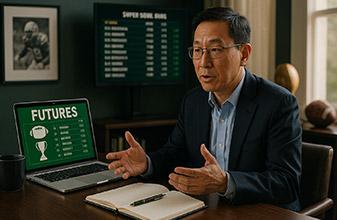An effective but not-so-obvious bet spread?

What’s an effective, not-so-obvious bet spread and more importantly, what does the casino, pit and surveillance, consider a worrisome spread? Blackjack card counters are often advised to camouflage their spread. Examples are to start with more than one unit off the top and randomize your bets when the count is near zero or between zero and +2, depending on the game. For example, on a six-deck shoe: 1x50 to 2x400 spread is a 1-16 spread. Say you start off 2x50, dropping to 1x50 at TC-1. Does that really fool anyone? Do they now think you use only a 1-8 spread when you eventually end up at 2x400 at TC4?
Or you start off at 2 or even 3 units at a deeply-dealt, good-rules double deck, dropping to 1 unit at negative counts and end up at 8 units at high counts. Does it really matter where you started? Or whether you went randomly between 1, 2, and 3 units at TC 0-2? All the casino really has to do is plug in what someone's average bet is at TC-1 and TC3+ and it should be fairly obvious who is playing with an advantage and who isn't. There is no camouflage that will hide this. Essentially, aren’t all effective spreads naked?
Bama: Your last sentence assumes all casino employees are competent and interested; this is far from correct.
Trying to imitate ploppies, you don’t drop down in negative counts if you win, so you start with, say, 2 x 50 and lose one and win one, so you keep 2x50. The floorperson sees you betting 2x50 several times, so they look at that as your minimum bet. When you go down to 1x25 and win in negative counts, chip up -- 25, 50, 75, whatever, as this looks just like how a gambler plays. Start sometimes at 2 x 75. When the count is good and you bet 2 x 300, the spread doesn't look as big.
The last thing you want to do is starting at 1x25 and playing 25, 25, 25 all the way to the end of the shoe then start betting 2x100, 2x200 and so on as this will get you figured out by most casino folks, even the not-so-bright ones.
EmeraldCityBJ: Certainly if they observe you going 1x50 to 2x400, most places will consider that to be 1-16. However, if you're able to do 2x50 to 2x400 most of the time and they don't happen to notice when you drop to one hand, they might assume 1-8. This is also a reason that short sessions and trying to avoid getting noticed by the pit is important. If you keep quiet and blend in, there’s a chance they will never observe your full spread.
A couple more tips if disguising your spread is really important to you:
- Try to play spots close to first base
- When dropping to one hand, keep using the spot closest to third base
The idea here is that if the pit happens to start watching your table in the middle of a hand, you want them to assume that you got a blackjack or that you busted your first spot, which is why it’s now empty.
TMJdoc: In my experience, if a floorperson decides to count down a shoe with you, he/she will probably see through most cover methods. If the floorperson decides not to count down with you for various reasons (laziness, inability to count, inability to count well, busy with other things, etc.), cover methods may be effective.
LVBear: Cultivating a “perceived weaker spread” is almost an art form. One method is to bet in ranges, not like a robot -- set a range for each true count, and sometimes slightly overbet or underbet the optimal amount, staying within the range. Or look like a ploppy and bet unequal amounts on your two hands, keeping the total within the range. These strategies will increase variance a bit, but can sometimes help throw off even a sharp pit or surveillance person.
Originally published on bj21.com Green Chip, edited for this format.











Please log in or register to leave a comment